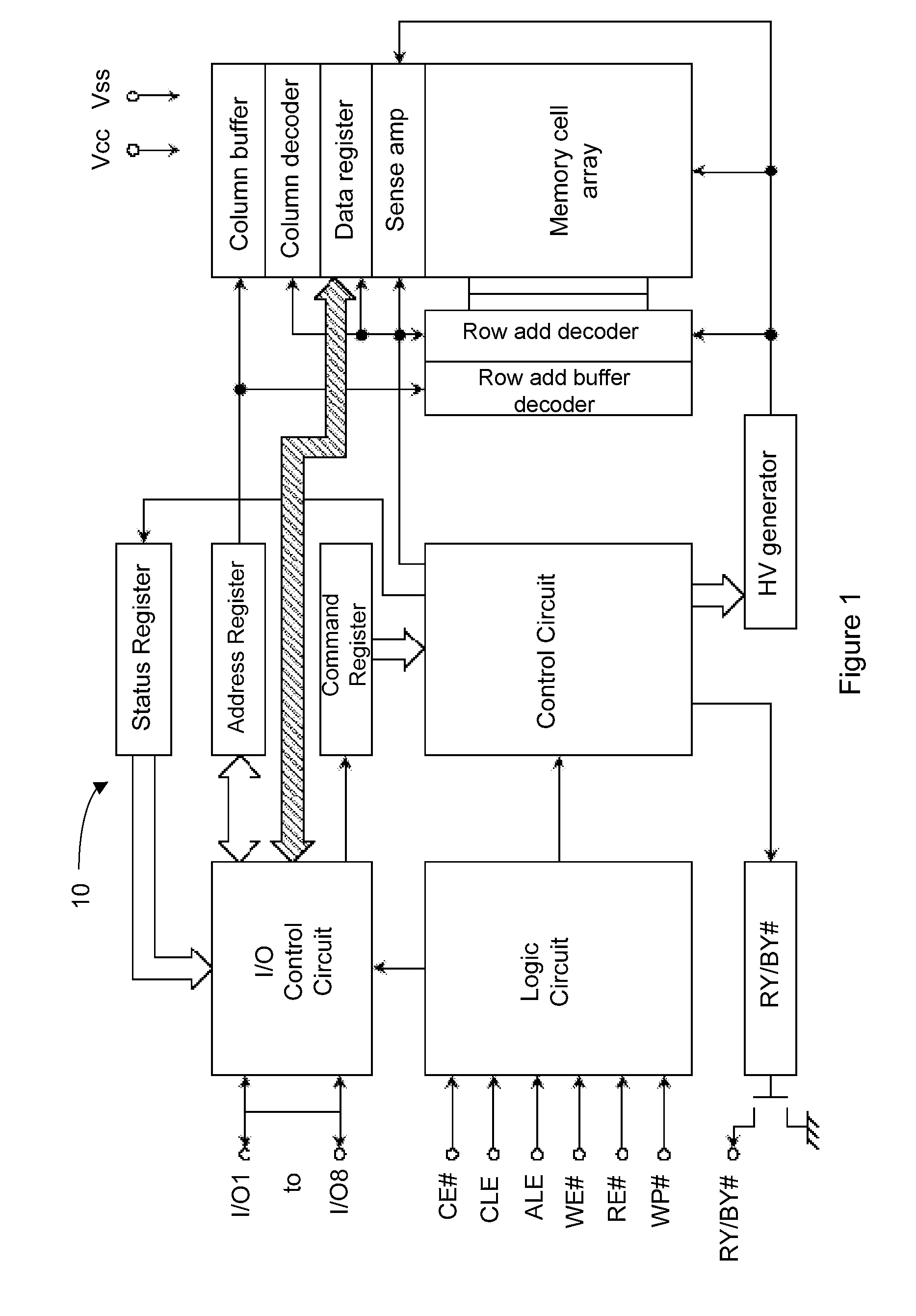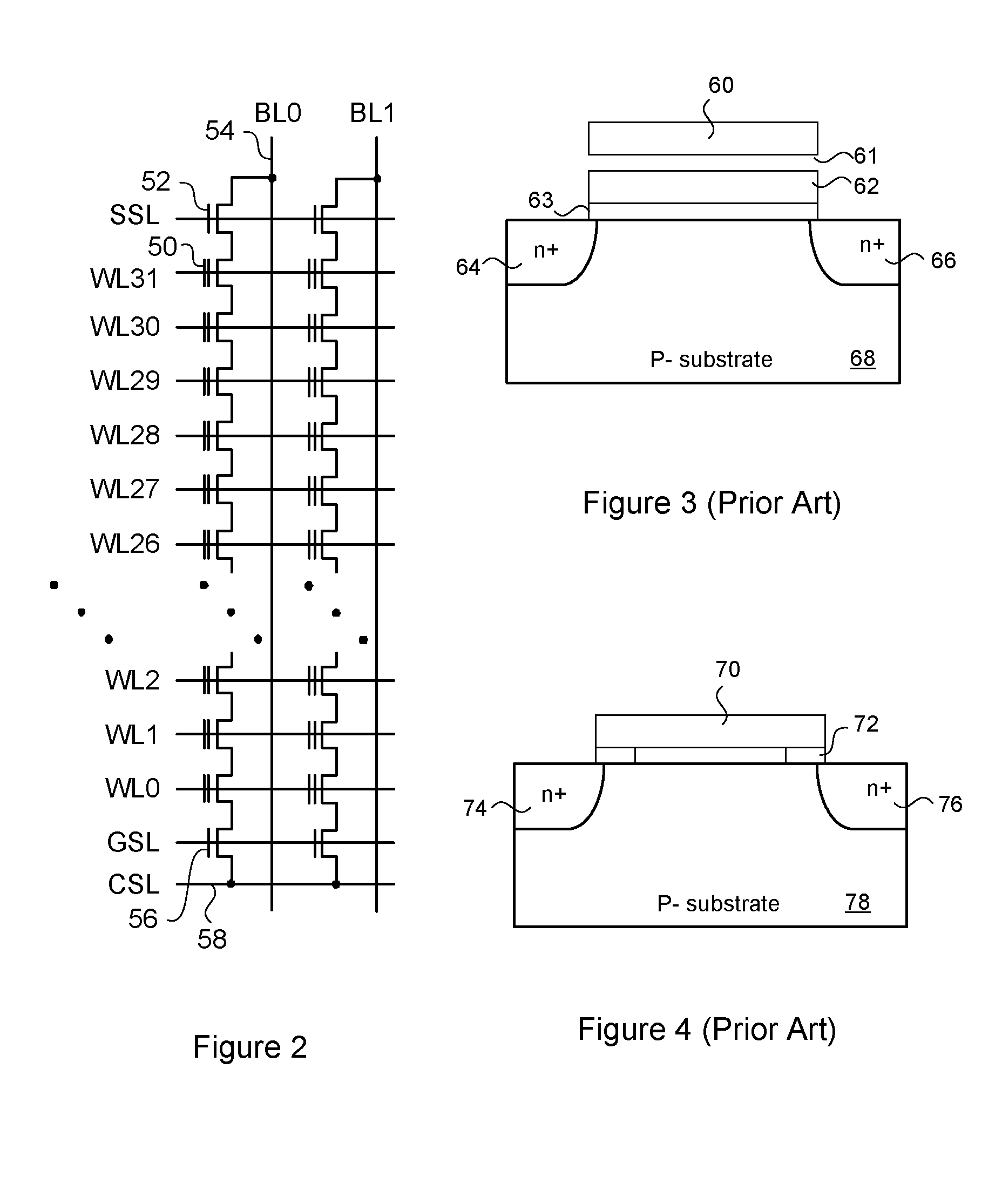Flash multi-level threshold distribution scheme
- Summary
- Abstract
- Description
- Claims
- Application Information
AI Technical Summary
Benefits of technology
Problems solved by technology
Method used
Image
Examples
Embodiment Construction
[0055]Generally, aspects of the present invention provide a threshold voltage distribution scheme for multi-level Flash cells with optimal Vt window and maximum Vt distance, while at the same time maintaining Vread at lower levels. In one embodiment, this is accomplished by programming at least one cell state in the erase voltage domain (for example, with a negative Vt value).
[0056]FIG. 7 is an exemplary embodiment of the invention. FIG. 7 shows a threshold voltage distribution for a multi-level Flash memory cell capable of storing 2 bits of data. In the present embodiment, there is one program state (cell state 1, corresponding to data “10”) lying in the erased voltage domain with erased state (cell state 0, corresponding to data “11”). Therefore, there are two cell states lying in the erased voltage domain and two cell states (cell state 2, corresponding to data “01” and cell state 3, corresponding to data “00”) in the program voltage domain. By programming this state in the erase...
PUM
 Login to View More
Login to View More Abstract
Description
Claims
Application Information
 Login to View More
Login to View More - R&D
- Intellectual Property
- Life Sciences
- Materials
- Tech Scout
- Unparalleled Data Quality
- Higher Quality Content
- 60% Fewer Hallucinations
Browse by: Latest US Patents, China's latest patents, Technical Efficacy Thesaurus, Application Domain, Technology Topic, Popular Technical Reports.
© 2025 PatSnap. All rights reserved.Legal|Privacy policy|Modern Slavery Act Transparency Statement|Sitemap|About US| Contact US: help@patsnap.com



